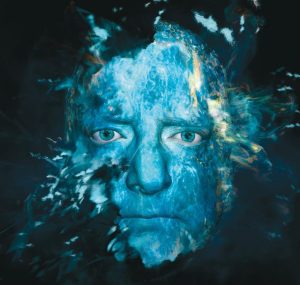Our worlds are becoming increasingly more engulfed by technology. Even the little things we do in life are often governed by our mobile phones. I’m sure I’m not alone when I tell you that the first thing I do in the morning is roll over and check my phone for messages and emails I may have missed in the night. In fact, if I ever leave the house without my mobile I feel like I’ve lost an arm. But if technology is so prominent in our everyday life, shouldn’t this be reflected in the work we create? How would that work?

Let’s start by looking at the 2017 production of ‘The Tempest’, from the Royal Shakespeare Company (RSC). They didn’t get an endorsement from Kim Kardashian or throw in a celebrity that came 4th in X-factor in 2009. No, they did something different. Something that has never been attempted in theatre before. They decided to employ tactics from the technical revolution working alongside Intel to create the first ever live avatar with an onstage performer. Just the idea of this spectacle seduced curious audiences into buying tickets months in advance and has challenged theatre on the whole to work out ways to integrate available technology into their own work.
The idea of creating a spectacle to sell tickets isn’t original in itself. This can be seen throughout history, all the way back to the Roman Amphitheatres where a variety of shows from gory gladiator fights taking centre stage to entire arenas being flooded where epic sea battles could be re-enacted. The Tyne Theatre and Opera House in Newcastle is the only remaining theatre in the UK to have full working stage conveyor belts upon which galloping horses could run towards the audience (obviously not used today, imagine the paperwork, but fascinating none the less). And I once saw a circus in Shanghai, where I assume health and safety laws are slightly different to the UK, in which a motorcyclist rode into an enormous spherical cage with enough speed to propel him upside down on the ceiling. What’s more amazing is that he was then joined by not one, not two, but FIVE additional riders all travelling round missing each other by inches. What a finale! My point is the RSC understood that spectacle sells, conceiving a unique idea which would intrigue and astound. And the new way to do this? Technology.
Before Pokémon Go and Wizards Unite, Intel created an incredible Virtual Reality (VR) experience at their Annual General Meeting in 2014. Audiences downloaded an app on their phones and filmed the main cinema screen which was showing a computer animated whale. Much to the shock of the spectators the whale burst out of the screen and out over the crowd. This footage went viral and, more importantly, gave the RSC an idea. What if this technology could be pushed a little further? What if we took Ariel, a fantastical fairy known for his mood swings, and designed magical projections to illustrate them? Is there a way the fairy can mimic an actor’s performance live onstage accurately? In asking these questions and reaching out to Intel an exciting partnership began.
I must admit I have a great respect for the RSC in reaching out to a company like Intel to work with and sponsor their production. I mean, the resources that a company like intel has available to them in additional to the funding they can afford to invest must be incredible. Imagine Intel put in £100,000. They have processors in pretty much every computer and laptop available on the market. That must seem like pocket change to them, but imagine what that kind of money means to a charitable arts organisation. Additionally, they have the talent and equipment to push these boundaries. For them to be seen using these facilities to increase awareness and audience for the arts is beneficial for both parties.
Now, I know what many of you will be thinking. The RSC is one of the largest theatre companies in the country. They also have the added bonus of being popularised within the tourism industry. The Swan Theatre is, of course, in Stratford, the birthplace of the most famous playwright ever to have lived, William Shakespeare. The budget they have every year is insane! In a small scale company with a minute if not non-existent budget a feet like this would be improbable, impractical, impossible.
But Why? Why should we be limited by the size of our company? Why not limit ourselves to the size of our endless imaginations?

There are plenty of small start-up tech firms or talented freelancers out there who would be delighted to give some of their time to work on a cross collaborative project. One to keep your eye on over the next couple of years is ‘Digital Midsummer’ in which Artistic Director Rebecca Gadsby is creating a production intending to lead the way in performative digital technology to connect younger audiences and first-time theatre goers to Shakespeare. It is innovative theatre companies like this that I hope will inspire the future of productions.
Another thing to consider is that as technology becomes more advanced it gets cheaper to produce and more accessible to the masses. You need only look at intel’s development of entertainment drone shows to see how quickly technology can progress starting with their collaborative Christmas show with Disney only 3 years ago where you could just about make out a revolving Christmas tree in the sky, to their most recent and world record breaking display at the end of last year where 2018 drones flew perfectly synchronised into the sky to form a wonderfully detailed image of a brain.
It is about finding something different. It’s about working with someone different.
Have you used technology or worked with technology companies in any of your creative endeavours recently? We would love to hear about it in the comments below!
Find out more about the Tyne Theatre and Opera House HERE
Watch that Intel Whale burst out the cinema screen HERE
Watch the 2016 Intel and Disney Christmas Drone Show HERE
Watch Intel’s World Record Breaking Drone Show HERE
Learn more about Rebecca Gadsby’s Digital Midsummer HERE
